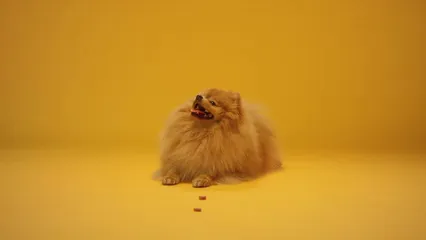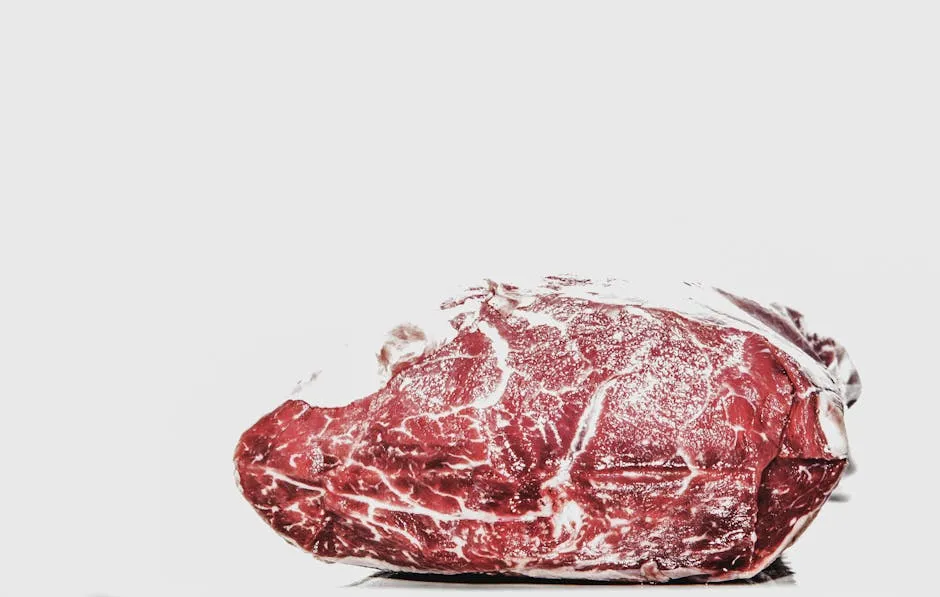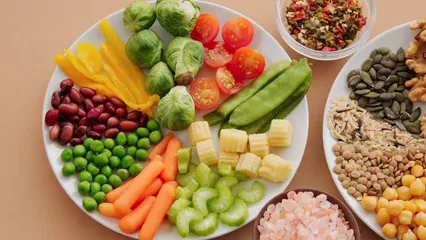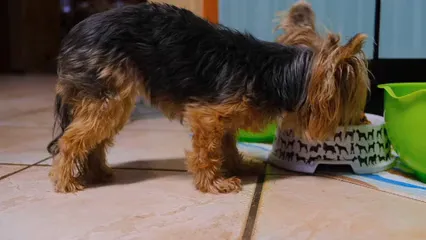Introduction
Have you ever considered switching your dog to a raw diet? Many pet owners are embracing this approach for its health benefits. Raw feeding can enhance your dog’s vitality and overall well-being. This guide serves as a helpful resource for beginners eager to transition their furry friends to a raw diet.
And if you’re serious about making this switch, you might want to check out the Raw Dog Food Cookbook: 100+ Recipes for a Healthier Dog. It’s packed with delicious recipes that will have your pup drooling and wagging their tail in sheer delight!
Summary and Overview
A raw diet for dogs consists mainly of uncooked meat, bones, and organs. Some owners also include fruits and vegetables. The benefits of this diet are impressive. Dogs often experience better digestion, shinier coats, and improved dental health. However, there are concerns about safety and nutritional balance. Many believe raw feeding can lead to bacterial infections. Yet, with proper handling, these risks can be minimized. It’s vital to ensure your dog’s diet is well-balanced to avoid deficiencies. Understanding these fundamentals will help make the transition smoother and more effective.
When it comes to keeping your dog’s dining experience clean and stylish, consider investing in Stainless Steel Dog Food and Water Bowls. They’re durable, easy to clean, and perfect for every mealtime mess!

Understanding Raw Diets
What is a Raw Dog Food Diet?
A raw dog food diet includes uncooked components like raw meat, bones, and organs. These ingredients mimic a dog’s natural eating habits. There are two popular methods: the BARF diet and the Prey Model. The BARF (Biologically Appropriate Raw Food) diet typically includes meat, bones, and some fruits and vegetables. It emphasizes balance with around 70% muscle meat and 30% organs and bones. The Prey Model focuses solely on animal parts, replicating how wild canines eat. This method usually consists of about 75-80% meat, 10% raw meaty bones, and 5% organs like liver or kidney. Both approaches aim to provide a natural, species-appropriate diet that supports your dog’s health.
Understanding the differences between the BARF diet and the Prey Model can help you choose the best approach for your dog. BARF diet for dogs
Benefits of a Raw Diet
Switching your dog to a raw diet can lead to various health improvements. One significant benefit is a shinier coat. Dogs on a raw diet often exhibit healthier skin and fur due to essential fatty acids found in raw meat. Improved dental health is another advantage. Chewing on raw bones naturally cleans teeth and gums. This can reduce plaque buildup and freshen breath.
Additionally, raw diets promote better digestion. Dogs tend to have smaller, firmer stools, indicating efficient nutrient absorption. A study showed that dogs on raw diets have fewer digestive issues compared to those on kibble. This can translate to decreased vet visits and lower health costs in the long run.
Overall, the health benefits of a raw diet are compelling and well-supported by evidence. Many pet owners have reported noticeable improvements in their dogs’ vitality and well-being.

To keep those pearly whites shining, you’ll want to check out a Dog Toothbrush and Toothpaste Set. Because what’s better than a happy dog with a healthy smile?
Getting Started with Raw Feeding
Preparing for the Transition
Before you switch your dog to a raw diet, preparation is key. First, conduct thorough research on raw feeding. Understanding the right balance of nutrients is important. Look into various protein sources, including meats and organs, to ensure a balanced diet.
Sourcing high-quality ingredients is crucial. Check local butchers or trusted suppliers for fresh meat. You can also consider pre-packaged raw food options for convenience. Always consult your veterinarian before making significant dietary changes. They can provide guidance tailored to your dog’s health needs. This step is vital to ensure a smooth and safe transition.

And speaking of convenience, a Pet First Aid Kit is a must-have for any dog owner. You never know when your adventurous pup might get into a sticky situation! Be prepared and keep your furry friend safe.
How to Transition Your Dog to a Raw Diet
Transitioning your dog to a raw diet should be gradual. Start by mixing a small amount of raw food with their current kibble. Over the course of 1-2 weeks, slowly increase the proportion of raw food. A suggested timeline might look like this:
- Days 1-3: 20% raw, 80% current food
- Days 4-6: 40% raw, 60% current food
- Days 7-9: 60% raw, 40% current food
- Days 10-12: 80% raw, 20% current food
- Day 13+: 100% raw
During the transition, monitor your dog’s reaction closely. Look for any digestive upset or changes in appetite. If issues arise, slow down the transition process. Adjusting the diet gradually helps your dog adapt without causing gastrointestinal discomfort.

Essential Components of a Raw Diet
Protein Sources
When considering a raw diet for your dog, protein is essential. Various types of meat are great for raw feeding. Chicken, beef, lamb, turkey, and even fish are suitable options. Each type provides different nutrients that support your dog’s health.
Variety is crucial when selecting protein sources. Rotating between meats helps prevent nutritional deficiencies. It also keeps your dog interested in their meals. Offering different proteins can introduce new flavors and textures, which many dogs find exciting. Remember, balance is key in creating a well-rounded diet.

To measure those portions accurately, a Dog Food Scale can be a game changer. No more guessing how much you’re feeding – it’s precision at its finest!
Bone and Offal
Incorporating raw meaty bones and organ meats is vital in a raw diet. Raw bones provide necessary calcium and phosphorus, which support strong bones and teeth. They also help keep your dog’s gums healthy. Organ meats, like liver and kidney, are nutrient-dense and rich in vitamins.
A recommended feeding ratio is about 10% raw meaty bones and 10% organ meats. This balance ensures your dog gets the essential nutrients they need. Be cautious with bone sizes; always choose appropriate sizes for your dog’s breed to prevent choking hazards.

Vegetables and Fruits
While dogs primarily thrive on animal products, some owners opt to include vegetables and fruits in their raw diet. These can provide additional vitamins, minerals, and fiber. Dog-safe vegetables include carrots, green beans, and sweet potatoes. Fruits like blueberries, apples, and bananas can also be healthy additions.
However, not all fruits and vegetables are safe. Avoid feeding your dog onions, grapes, and avocados, as they can be toxic. Always wash and prepare any produce before feeding it to your dog to ensure safety. Remember to introduce any new food gradually to monitor for any adverse reactions.

For those hot summer days, a Dog Cooling Mat can be a lifesaver! Keep your furry friend cool while they enjoy their raw meals.
Common Concerns and Troubleshooting
Safety and Hygiene
Switching your dog to a raw diet brings safety concerns, particularly regarding bacteria like Salmonella. It’s crucial to handle raw food with care. Always wash your hands before and after handling raw meat. Clean surfaces, utensils, and bowls to prevent cross-contamination.
When storing raw food, keep it in the refrigerator or freezer. This will slow bacterial growth and maintain freshness. Use separate containers for raw meat and other foods. Thaw meat in the fridge, not on the counter, to minimize bacterial growth.
By following these safety steps, you can ensure a healthy experience for both you and your dog.

And to make sure your dog is always safe, consider investing in a Pet GPS Tracker. You can track their adventures and know they’re safe, even during their wildest escapades!
Troubleshooting Common Issues
While transitioning to a raw diet, some dogs may face challenges. Picky eaters might refuse raw food initially. Try mixing a small amount of raw food with their regular kibble to entice them. Gradually increase the raw portion over time.
Digestive upsets, like loose stools, can occur during the transition. If this happens, revert to their previous diet for a few days. Then, reintroduce raw food slowly, monitoring for any changes.
Keep a close eye on your dog’s stool quality. Well-formed, smaller stools indicate proper digestion. If issues persist, consult your vet for guidance tailored to your dog’s needs.

Conclusion
In summary, transitioning your dog to a raw diet can be rewarding, but it requires patience and observation. Remember to prioritize safety and hygiene during preparation. Monitor your dog’s response and adjust their diet as needed. The potential health benefits, like improved coat and digestion, make this approach worthwhile. For additional support, consider joining online communities or consulting resources dedicated to raw feeding.

Don’t forget to have some fun along the way! A Interactive Dog Puzzle Toy can keep your pup entertained and mentally stimulated while you prepare their meals!
FAQs
What is a raw dog food diet?
A raw dog food diet consists of uncooked ingredients. This includes raw meat, bones, and organs. Some owners add fruits and vegetables for additional nutrients. The aim is to mimic a dog’s natural diet, much like their wild ancestors. Two popular methods are the BARF diet and the Prey Model. The BARF diet emphasizes a balanced mix of meat, bones, and some plant matter. In contrast, the Prey Model focuses solely on animal products.
Is raw meat safe for dogs?
Raw meat can be safe for dogs when handled properly. Always follow food safety practices. Wash hands and surfaces after handling raw meat. Store raw food in the refrigerator or freezer to prevent bacterial growth. Thaw raw meat in the fridge instead of at room temperature. This minimizes the risk of harmful bacteria like Salmonella. Always source high-quality meat from reputable suppliers.
How much raw food should I feed my dog?
Feeding guidelines generally suggest 2-3% of your dog’s body weight per day. For instance, a 50-pound dog may need about 1-1.5 pounds of food daily. Adjust the amount based on activity levels, age, and metabolism. Monitor your dog’s body condition regularly. You should be able to feel their ribs without excess fat covering.
Can puppies eat raw food?
Yes, puppies can eat raw food! It’s often recommended to start raw feeding when they are weaning off their mother’s milk. Ensure that the diet is balanced and suitable for their growth. Puppies may require a little more than adult dogs, usually around 3% of their expected adult weight. Always consult your veterinarian before making significant changes.
What are the risks of feeding raw food?
Feeding raw food can pose some risks, mainly related to bacteria and nutritional balance. Harmful bacteria can be present in raw meat, leading to illness. To mitigate this, practice proper food handling and hygiene. Nutritional imbalances can also occur if the diet lacks variety. Ensure you include muscle meat, bones, and organs in appropriate ratios to avoid deficiencies.
Do I need to supplement a raw diet?
In some cases, yes, you may need to supplement a raw diet. If your dog has specific health issues or dietary restrictions, additional nutrients might be necessary. Common supplements include fish oil for omega-3 fatty acids and additional vitamins. Regularly evaluate your dog’s health and consult your veterinarian for personalized recommendations.
How do I choose the right raw food for my dog?
Choosing the right raw food involves selecting high-quality ingredients. Look for reputable brands that source their meat responsibly. If preparing at home, ensure you include a variety of protein sources. Balance is key, so incorporate muscle meat, bones, and organ meats in the right proportions. Always check for any specific dietary needs your dog may have.
Please let us know what you think about our content by leaving a comment down below!
Thank you for reading till here 🙂
All images from Pexels





